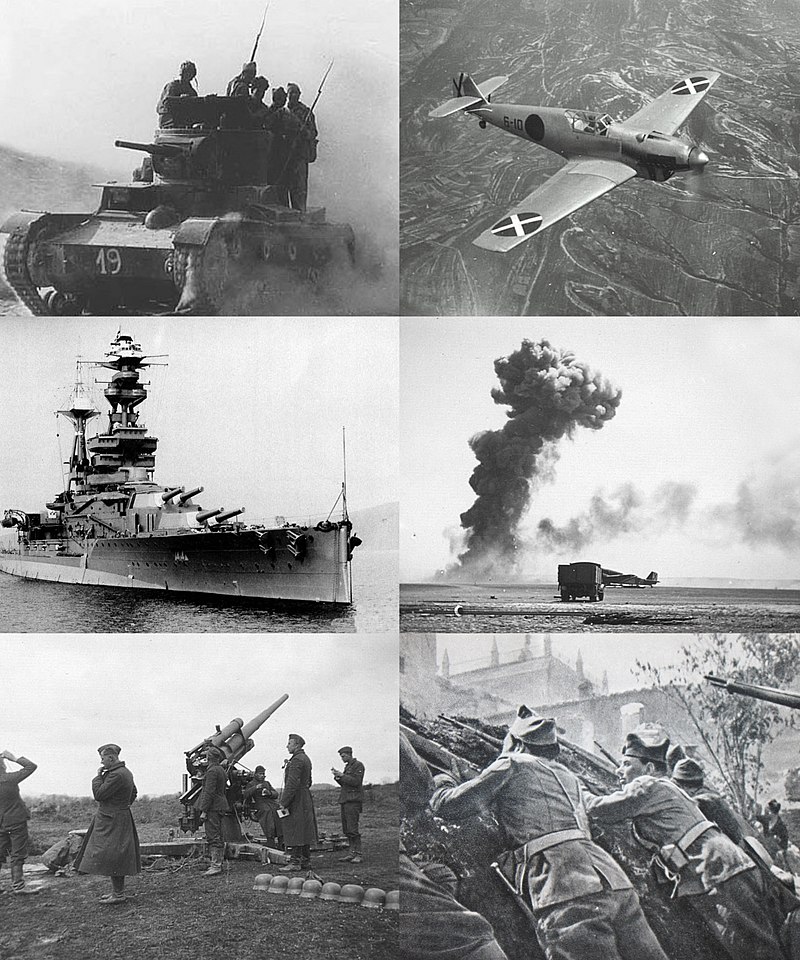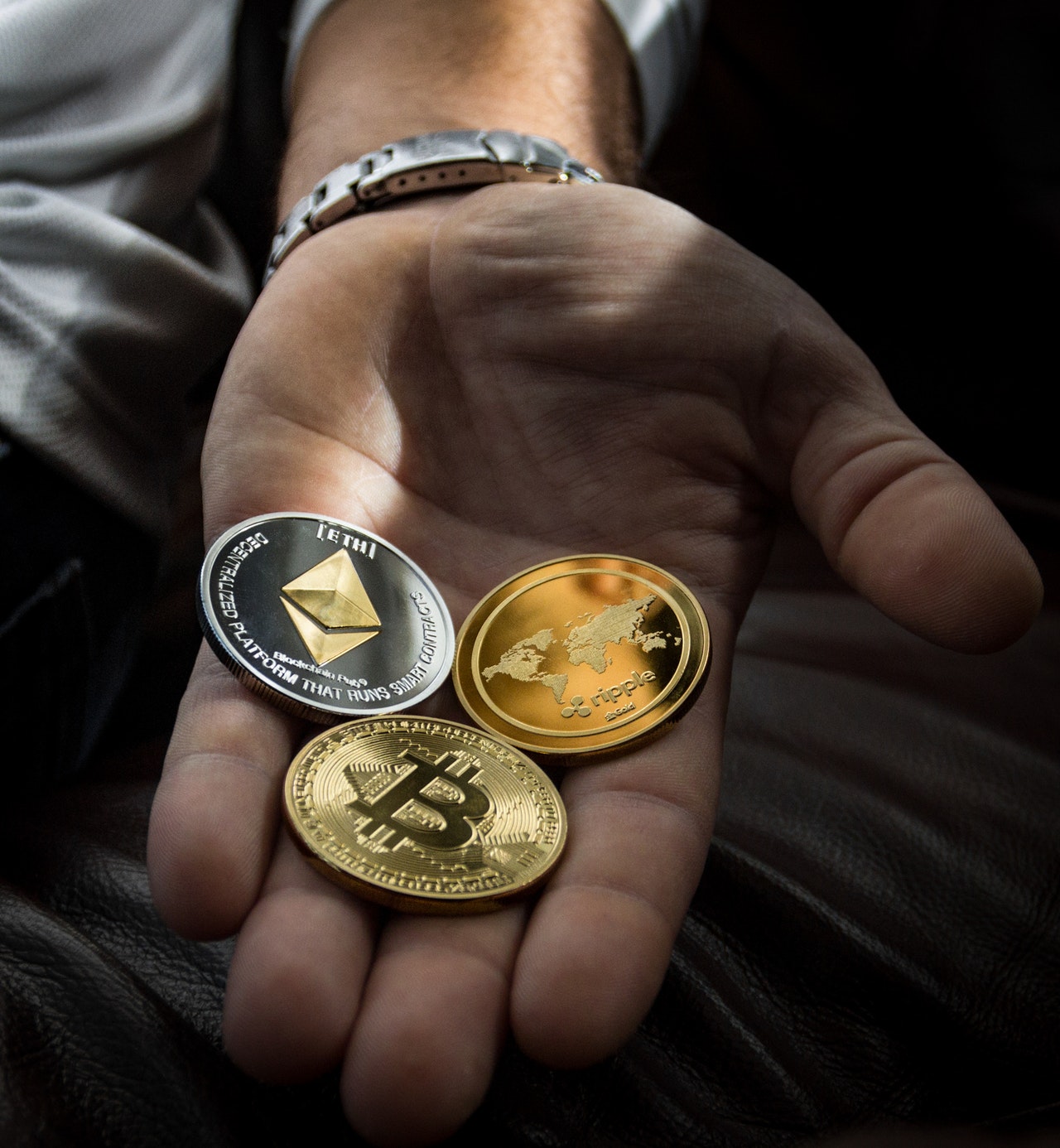What was the main cause of the Spanish Civil War? Who won the Spanish Civil War?
In Spain, the Republican defenders of Madrid raise the white flag over the city, bringing to an end the bloody three-year Spanish Civil War.
In 1931, Spanish King Alfonso XIII approved elections to decide the government of Spain, and voters overwhelmingly chose to abolish the monarchy in favor of a liberal republic. Alfonso subsequently went into exile, and the Second Republic, initially dominated by middle-class liberals and moderate socialists, was proclaimed. During the first five years of the Republic, organized labor and leftist radicals forced widespread liberal reforms, and the independence-minded Spanish regions of Catalonia and the Basque provinces achieved virtual autonomy.
The landed aristocracy, the church, and a large military clique increasingly employed violence in their opposition to the Second Republic, and in July 1936 General Francisco Franco led a right-wing army revolt in Morocco, which prompted the division of Spain into two key camps: the Nationalists and the Republicans. Franco’s Nationalist forces rapidly overran much of the Republican-controlled areas in central and northern Spain, and Catalonia became a key Republican stronghold.
During 1937, Franco unified the Nationalist forces under the command of the Falange, Spain’s fascist party, while the Republicans fell under the sway of the communists. Germany and Italy aided Franco with an abundance of planes, tanks, and arms, while the Soviet Union aided the Republican side. In addition, small numbers of communists and other radicals from France, the USSR, America, and elsewhere formed the International Brigades to aid the Republican cause. The most significant contribution of these foreign units was the successful defense of Madrid until the end of the war.
In June 1938, the Nationalists drove to the Mediterranean Sea and cut Republican territory in two. Later in the year, Franco mounted a major offensive against Catalonia. In January 1939, its capital, Barcelona, was captured, and soon after the rest of Catalonia fell. With the Republican cause all but lost, its leaders attempted to negotiate a peace, but Franco refused. On March 28, 1939, the victorious Nationalists entered Madrid in triumph, and the Spanish Civil War came to an end. Up to a million lives were lost in the conflict, the most devastating in Spanish history.
The Spanish Civil War (Spanish: Guerra Civil Española)[note 2] was a civil war in Spain fought from 1936 to 1939. Republicans loyal to the left-leaning Popular Front government of the Second Spanish Republic, in alliance with anarchists, of the communist and syndicalist variety, fought against a revolt by the Nationalists, an alliance of Falangists, monarchists, conservatives and Catholics, led by a military group among whom General Francisco Franco soon achieved a preponderant role. Due to the international political climate at the time, the war had many facets and was variously viewed as class struggle, a war of religion, a struggle between dictatorship and republican democracy, between revolution and counterrevolution, and between fascism and communism.[10] It has been frequently called the "dress rehearsal" for World War II.[11] The Nationalists won the war, which ended in early 1939, and ruled Spain until Franco's death in November 1975.
- Events leading to World War II
- Treaty of Versailles 1919
- Polish-Soviet War 1919
- Treaty of Trianon 1920
- Treaty of Rapallo 1920
- Franco-Polish alliance 1921
- March on Rome 1922
- Corfu incident 1923
- Occupation of the Ruhr 1923–1925
- Mein Kampf 1925
- Pacification of Libya 1923–1932
- Dawes Plan 1924
- Locarno Treaties 1925
- Young Plan 1929
- Great Depression 1929–1941
- Japanese invasion of Manchuria 1931
- Pacification of Manchukuo 1931–1942
- January 28 Incident 1932
- World Disarmament Conference 1932–1934
- Defense of the Great Wall 1933
- Battle of Rehe 1933
- Nazis' rise to power in Germany 1933
- Tanggu Truce 1933
- Italo-Soviet Pact 1933
- Inner Mongolian Campaign 1933–1936
- German–Polish Non-Aggression Pact 1934
- Franco-Soviet Treaty of Mutual Assistance 1935
- Soviet–Czechoslovakia Treaty of Mutual Assistance 1935
- He–Umezu Agreement 1935
- Anglo-German Naval Agreement 1935
- December 9th Movement
- Second Italo-Ethiopian War 1935–1936
- Remilitarization of the Rhineland 1936
- Spanish Civil War 1936–1939
- Anti-Comintern Pact 1936
- Suiyuan Campaign 1936
- Xi'an Incident 1936
- Second Sino-Japanese War 1937–1945
- USS Panay incident 1937
- Anschluss Mar. 1938
- May crisis May 1938
- Battle of Lake Khasan July–Aug. 1938
- Bled Agreement Aug. 1938
- Undeclared German-Czechoslovak War Sep. 1938
- Munich Agreement Sep. 1938
- First Vienna Award Nov. 1938
- German occupation of Czechoslovakia Mar. 1939
- Hungarian invasion of Carpatho-Ukraine Mar. 1939
- German ultimatum to Lithuania Mar. 1939
- Slovak–Hungarian War Mar. 1939
- Final offensive of the Spanish Civil War Mar.–Apr. 1939
- Danzig Crisis Mar.–Aug. 1939
- British guarantee to Poland Mar. 1939
- Italian invasion of Albania Apr. 1939
- Soviet–British–French Moscow negotiations Apr.–Aug. 1939
- Pact of Steel May 1939
- Battles of Khalkhin Gol May–Sep. 1939
- Molotov–Ribbentrop Pact Aug. 1939
- Invasion of Poland Sep. 1939
The war began after a pronunciamiento (a declaration of military opposition) against the Republican government by a group of generals of the Spanish Republican Armed Forces, with General Emilio Mola as the primary planner and leader and having General José Sanjurjo as a figurehead. The government at the time was a coalition of Republicans, supported in the Cortes by communist and socialist parties, under the leadership of centre-left President Manuel Azaña. The Nationalist group was supported by a number of conservative groups, including CEDA, monarchists, including both the opposing Alfonsists and the religious conservative Carlists, and the Falange Española de las JONS, a fascist political party. After the deaths of Sanjurjo, Emilio Mola and Manuel Goded Llopis, Franco emerged as the remaining leader of the Nationalist side.
The coup was supported by military units in the Spanish protectorate in Morocco, Pamplona, Burgos, Zaragoza, Valladolid, Cádiz, Córdoba, and Seville. However, rebelling units in some important cities—such as Madrid, Barcelona, Valencia, Bilbao, and Málaga—did not gain control, and those cities remained under the control of the government. This left Spain militarily and politically divided. The Nationalists and the Republican government fought for control of the country. The Nationalist forces received munitions, soldiers, and air support from Fascist Italy and Nazi Germany, while the Republican side received support from the Soviet Union and Mexico. Other countries, such as the United Kingdom, the French Third Republic, and the United States, continued to recognise the Republican government, but followed an official policy of non-intervention. Despite this policy, tens of thousands of citizens from non-interventionist countries directly participated in the conflict. They fought mostly in the pro-Republican International Brigades, which also included several thousand exiles from pro-Nationalist regimes.
The Nationalists advanced from their strongholds in the south and west, capturing most of Spain's northern coastline in 1937. They also besieged Madrid and the area to its south and west for much of the war. After much of Catalonia was captured in 1938 and 1939, and Madrid cut off from Barcelona, the Republican military position became hopeless. Following the fall without resistance of Barcelona in January 1939, the Francoist regime was recognised by France and the United Kingdom in February 1939. On March 5, 1939, Segismundo Casado led a military coup against the Republican government. Following internal conflict between Republican factions in Madrid in the same month, Franco entered the capital and declared victory on 1 April 1939. Hundreds of thousands of Spaniards fled to refugee camps in southern France. Those associated with the losing Republicans who stayed were persecuted by the victorious Nationalists. Franco established a dictatorship in which all right-wing parties were fused into the structure of the Franco regime.
The war became notable for the passion and political division it inspired and for the many atrocities that occurred, on both sides. Organised purges occurred in territory captured by Franco's forces so they could consolidate their future regime. Mass executions on a lesser scale also took place in areas controlled by the Republicans, with the participation of local authorities varying from location to location.







Comments
Post a Comment